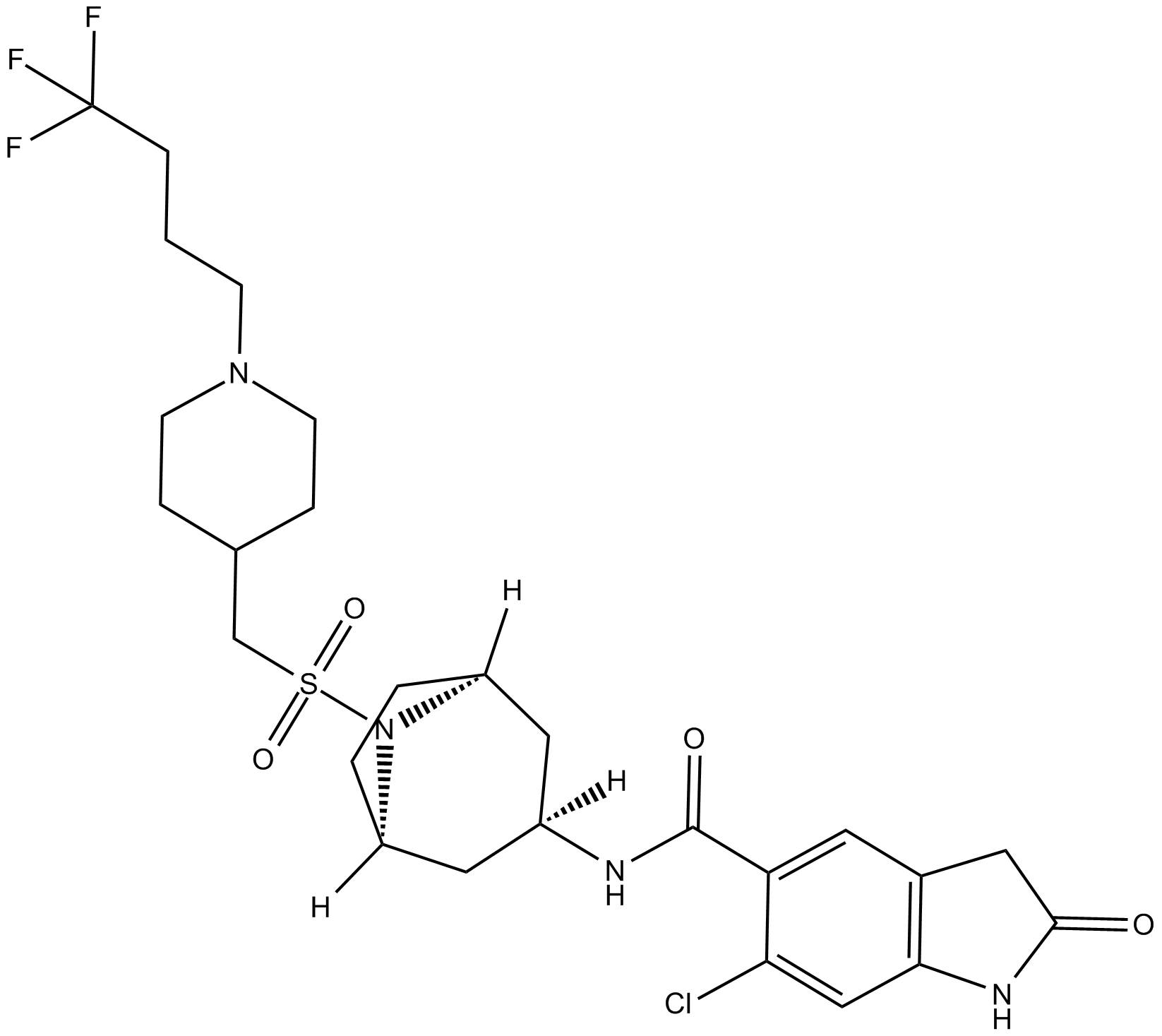EPZ031686 |
| Catalog No.GC16224 |
A SMYD3 inhibitor
Products are for research use only. Not for human use. We do not sell to patients.

Cas No.: 1808011-22-4
Sample solution is provided at 25 µL, 10mM.
IC50: 3 nM
EPZ031686 is the first SMYD3 inhibitor.
Set and Mynd Domain containing 3 (SMYD3), a lysine methyltransferase (KMT) expressed at high levels in a number of different cancer histologies, is reported to be associated with a poor clinical prognosis.
In vitro: EPZ031686 was the first SMYD3 inhibitor found to show double-digit nanomolar cellular activity. In addition, EPZ031686 displayed noncompetitive inhibition to both SAM and MEKK2 with a Ki = 1.2 and 1.1 nM, respectively. Moreover, EPZ031686 showed less than 30% inhibition against 16 histone methyltransferase targets at a 10 μM [1].
In vivo: Male mice i.v. administered a single dose of EPZ031686 at 1 mg/kg showed a moderate clearance of 27 mL/min/kg, which was in very good agreement with the microsomal data, with a volume of distribution at steady state of 2.3 L/kg, translating to a terminal half-life of 1.7 h. Around 20% of the administered dose was excreted unchanged in urine after 24 h, equivalent to a renal clearance of 5.3 mL/min/kg. Bioavailability of 48 and 69 was observed at 5 and 50 mg/kg, respectively, resulting in the EPZ031686 unbound blood concentration remaining above the SMYD3 IC50 value for more than 12 h after a 50 mg/kg p.o. administration [1].
Clinical trial: Up to now, EPZ031686 is still in the preclinical development stage.
Reference:
[1] Mitchell LH et al. Novel Oxindole Sulfonamides and Sulfamides: EPZ031686, the First Orally Bioavailable Small Molecule SMYD3 Inhibitor. ACS Med Chem Lett. 2015 Aug 27;7(2):134-8.
Average Rating: 5 (Based on Reviews and 3 reference(s) in Google Scholar.)
GLPBIO products are for RESEARCH USE ONLY. Please make sure your review or question is research based.
Required fields are marked with *




















